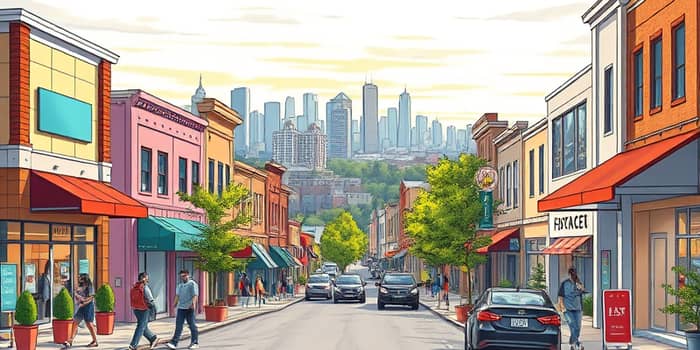
As Americans re-evaluate where they live and work, retail environments must evolve to meet new demands. From bustling city centers to expanding suburban corridors, migration shifts are fundamentally reshaping consumer habits and real estate strategies.
Suburban living isn’t a novel trend. In fact, the rush to suburbs after World War II set a precedent for decentralization. Yet, the COVID-19 pandemic reignited this movement, sparking profound demographic shifts across generations.
Between 2020 and 2021, 85% of homebuyers aged 31 to 40—predominantly millennials—purchased properties in suburbs or small towns. These areas now represent 47% of total U.S. population growth and account for 62% of net migration, despite comprising just 34% of the population. This mass relocation is rewriting the playbook for retail location strategies.
Urban retail districts continue to struggle with foot traffic, sitting 10–20% below pre-pandemic levels. Projections suggest that traditional city-center shopping may never fully rebound to its prior volume.
Meanwhile, suburban asking rent growth outpaced urban cores in 2022, and availability rates in metropolitan areas now exceed those of the suburbs for the first time since 2013. Retailers are responding by opening larger stores in family-oriented markets and reducing their footprint downtown.
Millennials and Gen Z are now the primary drivers of consumer spending. These cohorts favor experiences that blend shopping, dining, and sustainability. Retailers are curating assortments that cater to family needs, home improvement, and eco-friendly products.
To capture suburban demand, retailers are adopting larger footprints and vibrant mixed-use districts have bounced back. Big-box formats now coexist with boutique stores offering local selections and click-and-collect services.
Key strategies include:
The U.S. faces an underretail situation of roughly 200 million square feet—about 5% of total stock. High-growth Sun Belt cities like Austin, Orlando, Nashville, and Houston are particularly underserved.
These figures underscore the need for new developments in both urban and suburban clusters. Retailers balancing growth opportunities must factor in unprecedented supply chain realignment and consumer demand shifts.
Population redistribution is prompting retailers to rethink distribution networks. New regional distribution centers and last-mile hubs are emerging closer to suburban and tertiary markets to ensure timely fulfillment.
Of 28 retail subsectors, 19 remain highly susceptible to e-commerce disruption. Sun Belt markets, however, have demonstrated resilience by focusing on tailored tenant mix and in-person experiences.
Local governments and community organizations are experimenting with policies and initiatives to sustain vibrant retail environments. Strategies include tax incentives for mixed-use developments, pedestrian-friendly zoning, and small-business grants.
These efforts aim to create walkable hubs where shopping, dining, and living intersect, maintaining economic vitality and social cohesion.
Internationally, urbanization continues to correlate with economic development, offering improved access to essential services. However, rapid change can exacerbate inequalities and strain infrastructure.
Lessons from global cities emphasize the importance of inclusive planning, resilient logistics, and adaptive retail models that can pivot between high-density and dispersed consumer bases.
As migration patterns continue to evolve, retailers must adopt flexible strategies that blend digital and physical experiences. Anticipated trends include:
Ultimately, retail landscapes will be defined by their ability to respond to ongoing demographic and economic changes. By embracing innovation, collaborating with municipalities, and prioritizing consumer convenience, the retail sector can thrive in this new era of mobility.
The migration from urban cores to the suburbs represents more than a shift in address—it signals a transformation in how we shop, live, and connect. Retailers and communities that adapt thoughtfully will shape the next chapter of American commerce.
References













